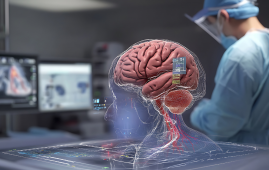

A group of microbiologists from Stanford, Yale, the Karolinska Institutet, Rutgers, The State University of New Jersey, and The State University of New Jersey have created a straightforward, low-cost LAMP-based technology that may be used to identify low amounts of pathogens in patient samples. In the journal Science Advances, the researchers outlines the elements that went into creating the gadget.
One of the lessons from the global pandemic was the requirement for an inexpensive, user-friendly tool that can identify a COVID-19 infection before symptoms appear. Such individuals should be kept apart in order to stop the disease’s spread. The research team asserts that they have created just such a device in this latest endeavor.
The researchers began by thinking that their gadget would need to recognize viral DNA rather than circulating antigens when they were developing it. That would enable the detection of an infection even before the immune system became significantly active. And as a result, they started developing a point-of-care (POC) device using loop-mediated isothermal amplification (LAMP) technology.
It functions by gathering pathogen DNA into balls after it has been concentrated. The team discovered that the balls could be examined using an electrical signaling device to detect the particular virus. Additionally, the quantity of balls in a sample would reveal the pathogen’s level of concentration.
SARS-CoV-2, HIV, and the tuberculosis bacterium could all be detected in low amounts when the device was tested using saliva samples. They also discovered that it could be mass produced affordably and made tiny enough to be sold at almost any location and utilized by unskilled persons. In less than an hour, it also provided results.
The tool could also be used to identify bacterial enzymes linked to pathogens that are developing antibiotic resistance. In order to trademark their technology and launch it as quickly as possible, the researchers intend to carry out additional study.
more recommended stories
 Coffee and Cognitive Function: Evidence Review
Coffee and Cognitive Function: Evidence ReviewA new narrative review in Cureus.
 AI in Emergency Medicine and Clinician Decision Accuracy
AI in Emergency Medicine and Clinician Decision AccuracyEmergency teams rely on rapid, accurate.
 World Summit Outlines Core Principles for Healthy Longevity
World Summit Outlines Core Principles for Healthy LongevityWhy Healthy Longevity Demands a New.
 Colorectal Cancer Screening Rates Low in Adults 45–49
Colorectal Cancer Screening Rates Low in Adults 45–49Recent UCLA research reveals that colorectal.
 Gut Immune Cells and Long-Lasting Antiviral Protection.
Gut Immune Cells and Long-Lasting Antiviral Protection.Breakthrough Findings on How Gut Immune.
 Mild Pancreatic Duct Dilatation Signals Higher Cancer Risk
Mild Pancreatic Duct Dilatation Signals Higher Cancer RiskEarly Structural Changes Offer Critical Clues.
 How the Uterus Senses Force During Labor: New Insights
How the Uterus Senses Force During Labor: New InsightsA new study published in Science.
 Fat-Free Mass and Brain Outcomes in Preterm Babies
Fat-Free Mass and Brain Outcomes in Preterm BabiesEarly Fat-Free Mass May Hold the.
 How Hormones Shape Dopamine-Driven Learning
How Hormones Shape Dopamine-Driven LearningNYU Study on Hormones and Cognitive.
 Protein Pair Guides Chromosome Alignment in Mitosis
Protein Pair Guides Chromosome Alignment in MitosisKey Points A joint research team.

Leave a Comment